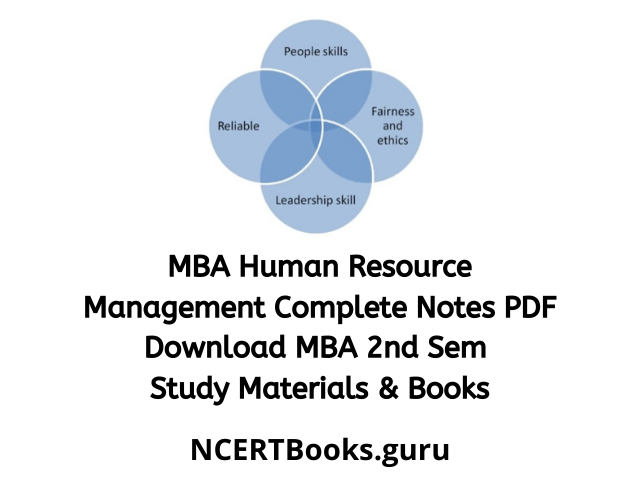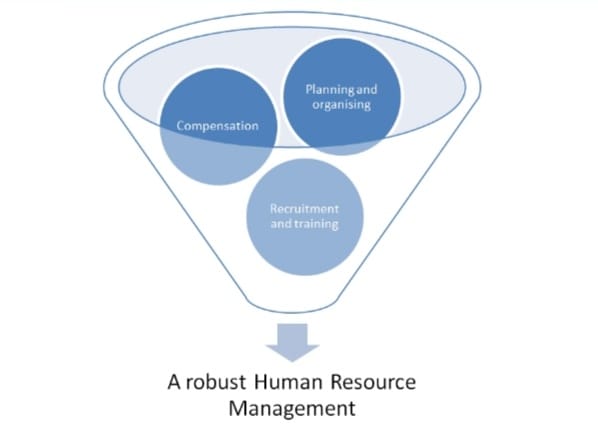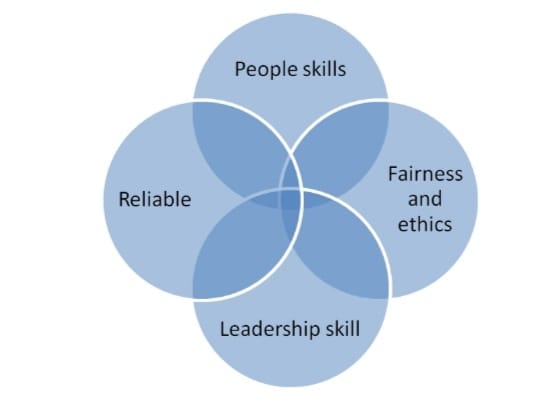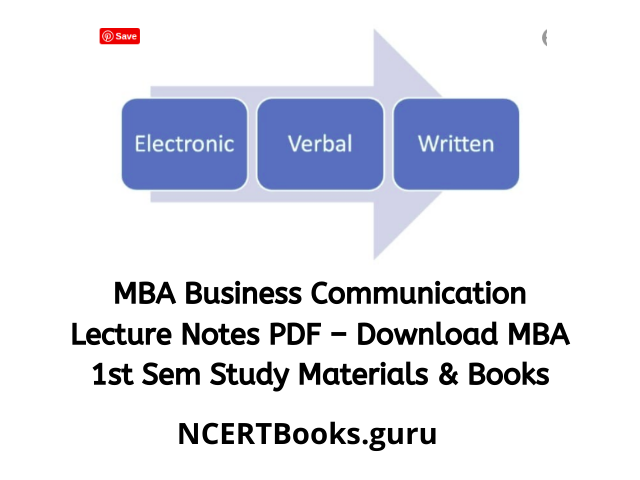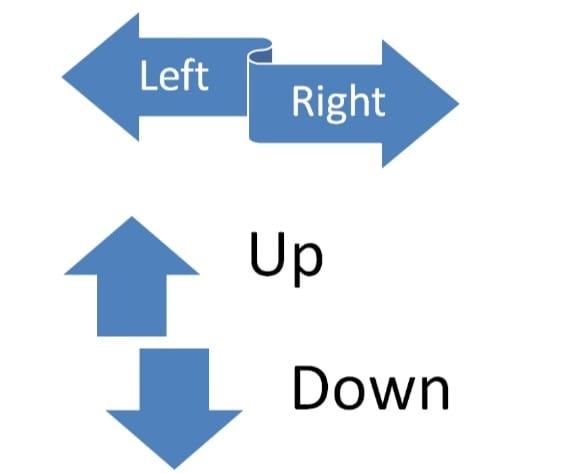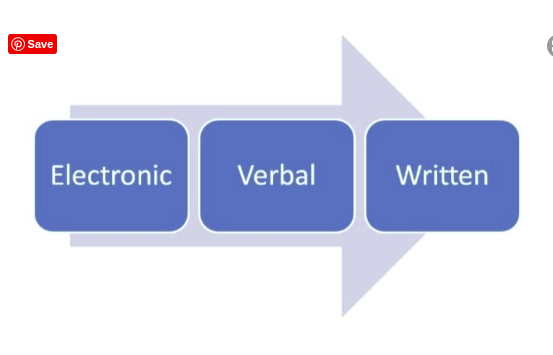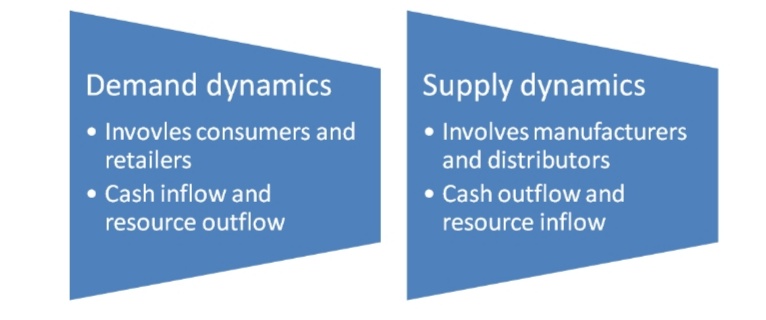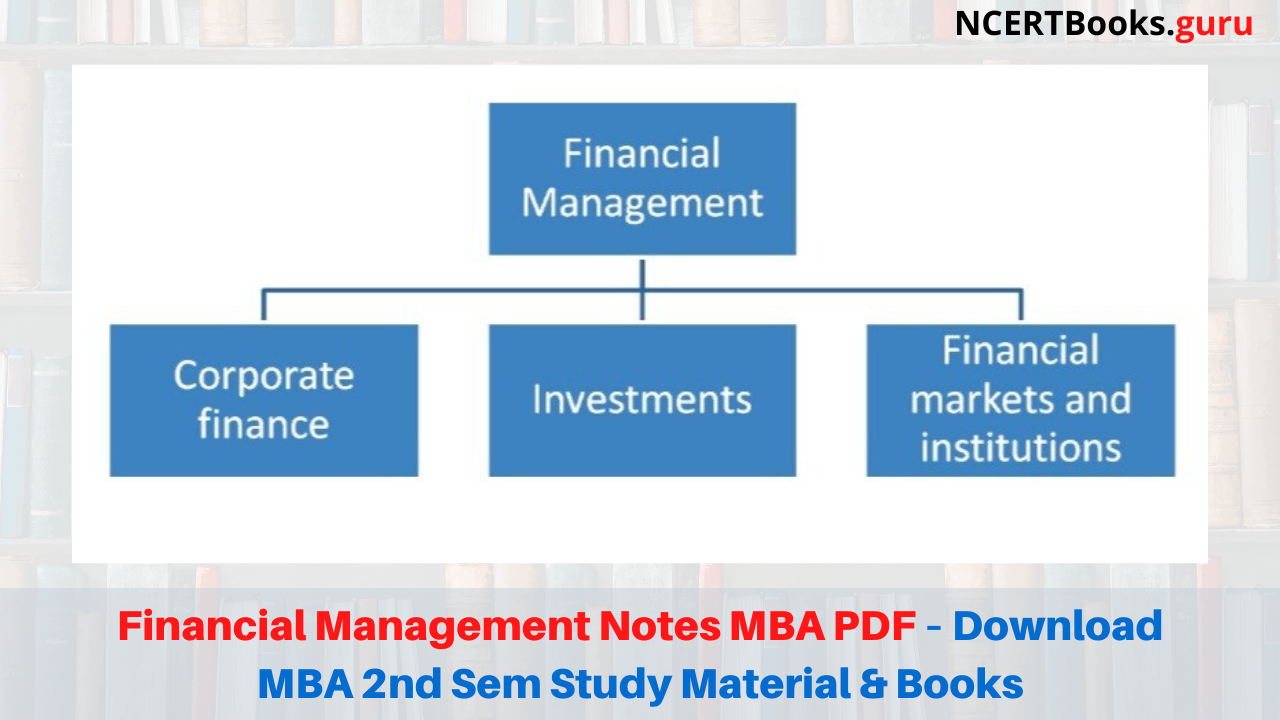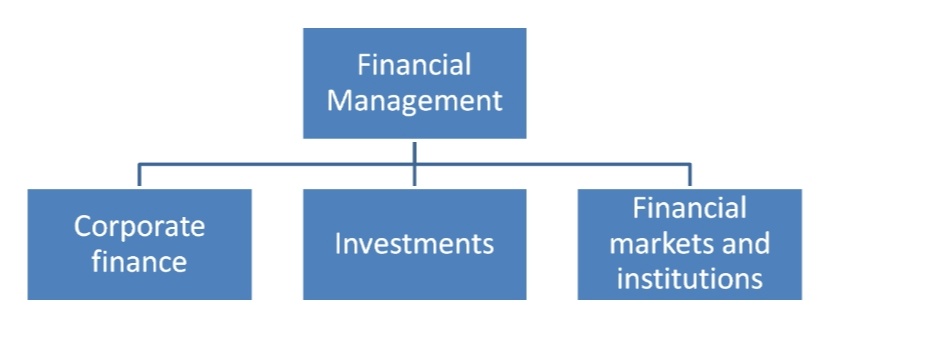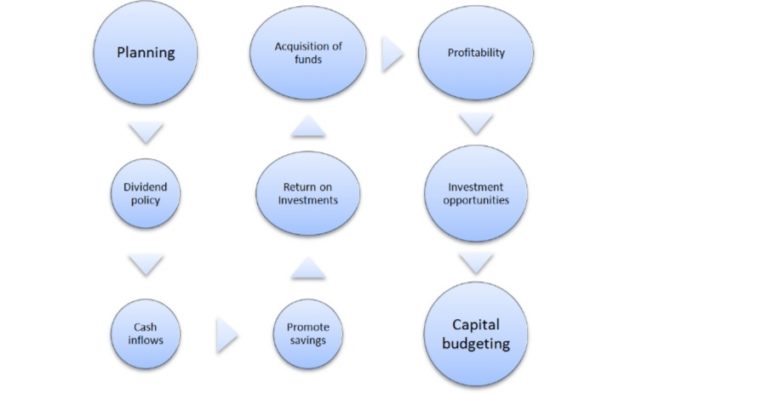MBA Subjects Semester wise: Master in Business Administration, popularly known as MBA is the most revered degree in India which is a measure of the gold standard for success among the new generation. Tens of thousands of students provide various entrance examinations to get into the top B-Schools in India in the hope of an illustrious and bright career. An MBA is a sure shot option if you want to have a successful professional as well as personal life. We say personal life because it’s easy to find your partner with a fancy MBA degree in hand!
And it is not just a wrong sought after trend in India. Successful people like the CEOs, top government officials like RBI governor and successful entrepreneurs who have changed the way business is done happens to be from the top IIMs. It is always the alumni success that counts for measurement of the success of a course and a college.
- So what do you actually learn in MBA?
- MBA Course Overview
- Business Specialization
- MBA Subjects Semester wise
- MBA Finance Subjects
- Different Subjects in MBA Operations
- MBA Marketing Subjects
- Subjects in MBA Human Resource
- Various subjects in MBA Data Analytics
- MBA Job Opportunities
- What are the subjects in MBA Finance for the first semester?
- Which is the Core Subject of MBA?
- Which Subjects are taught in an MBA Program?
MBA Subjects Details
| Course | MBA |
| Type of Degree / Graduation | Post-Graduation |
| Duration | 2 years |
| Semesters | 4 Semesters |
| Papers | 7-8 papers in each semester |
| Marks | 100 marks each paper |
| Specializations | Finance, Marketing, Human Resource Management (HRM), IT |
| Mode of Education | Regular, Distance Mode |
So what do you actually learn in MBA?
Of course, you learn about businesses and their operations and everything related to it. But that is a very vague idea that anyone laymen will have. And hence today, through this article, we will tell what exactly you will be thought once you step inside that lush green campus of your B-School, with hope and ambitions beaming from your twinkling pair of eyes.
The structure of the course varies from university to university. But rounding up and summing it up altogether, we have come up with a perfect blend of the course structure that you will mostly be learning in the top B-Schools across India.
An MBA program is designed to equip students with the required skill set and knowledge about the industry, fundamental business theories as well as the changing trends in the business world. Beginning with easy fundamental theories of business and gradually upping the ante, the program structure will be designed such that it will enable the students to appreciate the application of theory in real-life business situations through a well thought out pedagogy. The pedagogy consists of case study discussions in classrooms, business simulations in and out of classrooms, club activities, live projects, project presentations, internship projects, and other fascinating modes of learning.
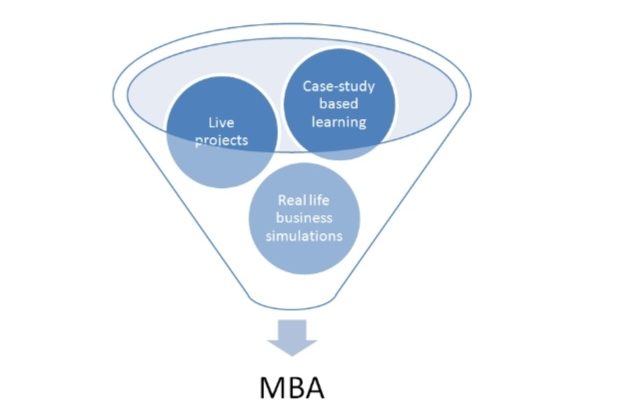
MBA Course Overview
There are six terms or semesters in most of the programs across the world. The first three usually focus on general management and helping the students learn the basics of all aspects of a business to have an all-rounded idea about the market environment. The general business area will be divided into:
- Economics
- Quantitative techniques
- Finance
- Marketing
- Operation
- Strategy
- Human resource
The courses covered in the first year will be common for all the students, irrespective of the specialization opted.
After the successful completion of the first year, students are expected to take up internship opportunities, either provided by the B-Schools or by themselves. They work at a company for a period varying between 8 to 14 weeks depending on the university affiliations and institute’s autonomy.
Internship experience for the students is invaluable in connecting the classroom learned theories with the real-world-ever-changing business environment.
Typical internship projects involve improving the process performance at a factory, finding out bottlenecks, and providing them with cost-effective business solutions, assisting marketing strategies and campaigns, and launching a new product for a company with brand sensitive ideas, reducing supply chain costs. Internship reports are to be regularly submitted to an academic guide (both external and internal guide) as assigned by the university.
Also Read:
Business Specialization
From semester 4 to 6, the curriculum is designed in such a way that it has a mix of elective courses across all four disciplines. Students opt for a selected area of specialization at the beginning of the second academic year. The specializations are:
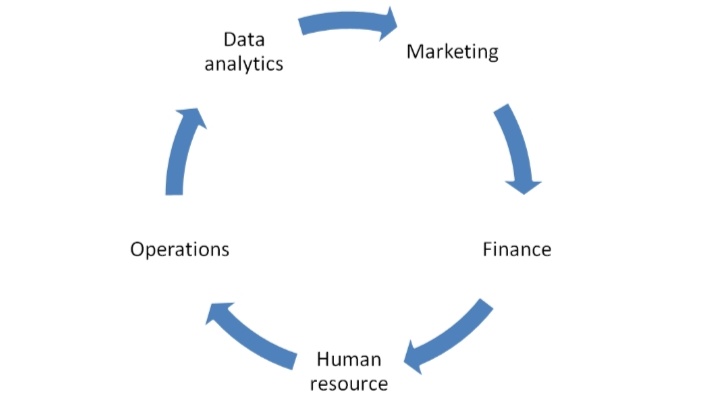
- Marketing
- Finance
- Human Resource
- Operations
- Data analytics
The curriculums are usually designed by academicians and University Grants Commission for various affiliated universities and colleges. All India Council for Technical Education also prescribes a set of curriculum rules and regulations that the affiliated institutes are obligated to follow. Insights are also taken from the professionals in the industry who ensures the course curriculum structures in the programs and content of each course matches the current and future requirement of global economies.
The various colleges and universities we have analyzed for their curriculum are:
- IIM-A
- IIM-B
- IIM-C
- Jamnalal Bajaj Institute of Management Sciences
- SP Jain
- Christ University
- Faculty of Management Studies- Delhi
- Anna university
- Osmania university
- Indian School of Business
- ICFAI Business School
- Symbiosis UniversitySome of the references is taken from top international B-Schools like:
- Nanyang Busines School
- Harward School of Business
- Stanford Business school
- Sloan School of management
- London school of economics
- Booth School of Business
- INSEAD- France
- Wharton school of business
- Ross School of Business
At the end of the program, students will be well prepared and ready to face the various challenges thrown at them by the real business world.
Certain universities also offer certification programs along with elective courses, such as:
- Financial Modeling
- Marketing analytics
- Six Sigma
- Digital Marketing
- Artificial intelligence and machine learning
- HR analytics
Must See: MBA Books
MBA Subjects Semester wise
The following is the curriculum followed by many MBA schools across the world:
Semester 1
- Micro-economics
- Corporate Social Responsibility
- Principles of accounting
- Principles of marketing management
- Tools and frameworks for decision making
- Quantitative methods and statistics
- Business communication and soft skills
- Organizational behavior-1
Semester 2
- Macroeconomics
- Business law
- Operations management
- Corporate finance
- Optimization and project research
- Organizational behaviour-2
- Marketing management
- Project management
Semester 3
- Financial modeling
- Supply chain management
- Business intelligence
- Strategic management
- Managerial economics
- Marketing search
- Corporate governance and business ethics
- Corporate finance-2
Semester 4
Internship Projects
MBA Finance Subjects
- Quantitative Analysis of Financial Decisions
- Security Analysis
- Investment Management
- Portfolio Management
- International Financial Management
- Management of Financial Services
- Management Control System
- Corporate Taxation
- Financial Derivatives
- Project Planning, Analysis & Management
- Risk Management
- Fixed Income Securities
- Corporate Governance
- Financial Reporting
Check more: MBA Finance Reference Books
Different Subjects in MBA Operations
- Product development and innovation
- Global operations management
- Production engineering and lean management
- Theory of constraints
- Business strategy and consulting
- Production, planning and control
- Project management
- Supply chain management
- Operation analytics
- Inventory control and management
- Logistics planning and control
- Global supply chain and logistics management
MBA Marketing Subjects
- Brand management
- Marketing management
- Marketing of financial products
- Sales and distribution
- Marketing research
- Retail management
- Rural Marketing
- B2B marketing
- B2C marketing
- Consumer behaviour
- Advertising and sales promotions
- Digital marketing
Also Read:
- MBA Strategic Management Lecture Notes
- MBA Business Communication Lecture Notes
- MBA Human Resource Management Notes
Subjects in MBA Human Resource
- Human resource management
- Business communication
- Organizational design
- Business ethics
- Human resource planning and development
- Talent acquisition and retention
- Learning and development management
- Strategic human resource management
- Performance management and competency mapping
- Compensation and reward management
- Labour laws
- Cross-culture and international human resource management
- Contemporary employee relations
- Human capital management
- Human resource audit
- Economics of human resources
Do Check: MBA HR Reference Books
Various subjects in MBA Data Analytics
- Supply chain analytics
- Big data
- R and python for business intelligence
- Business intelligence management
- Data mining
- Advanced data mining
- Quantitative theory
- Artificial intelligence in business models
- Neural network management
- HR analytics
- Data visualization
- Spreadsheet modelling and analysis
- Applied statistics
- Query languages
- Social and web analytics
- Industry application of analytics
Various subjects listed above are thought to students in the second year of MBA with specialization
The job market for management students is plenty with good opportunities. Some of the job roles you will be landing into after your MBA are:
MBA Job Opportunities
Finance
- Financial manager/analyst
- Credit analyst, accounting manager
- Risk and insurance manage
- Treasurer
- Finance manager
- Cash manager
- Portfolio manager
- Stockbroker
- Derivatives manager
- Chief financial officer
- VP (finance), and
- Finance director
Marketing
- Brand Manager.
- Account Manager.
- Research Manager.
- Sales Manager.
- Business Development Manager.
- Marketing
- Monetization Manager.
- SEO Manager.
- Advertising manager
- Sales and marketing trainee
- Customer relationship manager
- Marketing director
- VP- Marketing
- Chief Marketing officer
Operations
- Supply chain manager
- Logistics manager
- Inventory control manager
- Project managers
- Operations manager
- Sales operations
- Production manager
- Operations director
- VP- Operations
- Chief Operations Officer
Human Resource
- HR
- Staffing Director.
- Technical Recruiter.
- Compensation Manager.
- Employee Relations Manager.
- Employment Placement Manager.
- Director of HRTraining and Development.
- Organizational development and change consultant.
- Human resource director
- VP- Human resources
- Chief Human Resource officer
Data Analytics
- Data Analyst,
- Business Analyst
- Risk Analyst
- Trainee data scientist
- Business Intelligence analyst
- Big data analyst
- Data visualization consultant
- Business decision consultant
- Analytics director
- VP- Business analytics
- Chief Data Analytics office
A degree in MBA will no doubt provide you with an ample amount of opportunities across different industries around the globe. Being passionate about your hard work and dedication is one sure shot thing that will take you higher up in your career trajectory. It will not only make your industry independent and disciplined businessman/businesswoman but will also help you develop and nurture your personality and idiosyncrasies. The hard work and smart work that you will learn at B-Schools can be reflected in your life for that success factor to click.
FAQ’s on MBA Subjects Semesterwise
1. What are the subjects in MBA Finance for the first semester?
You will have subjects like Quantitative Analysis of Financial Decisions, Security Analysis, Investment Management, Portfolio Management, International Financial Management, and many more. Refer to the aforementioned article to know the MBA Finance Subjects in detail.
Final Words
Hope, the information shared as a part of the MBA Subjects Semesterwise has been beneficial in clarifying your concerns. For any assistance required do leave us a comment and we will be at your help at the soonest possible. Bookmark our site for more info regarding the various study materials, books & notes, etc.

